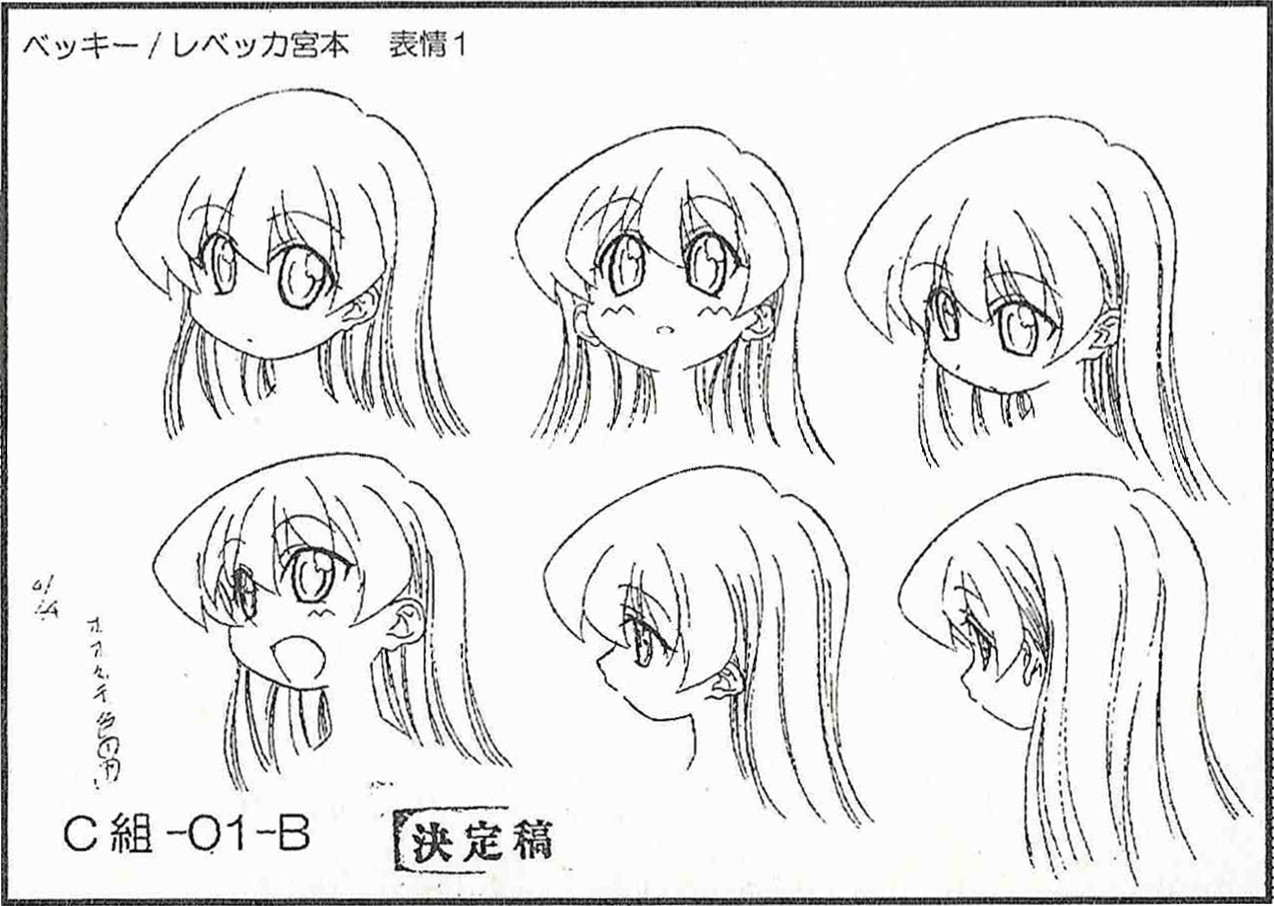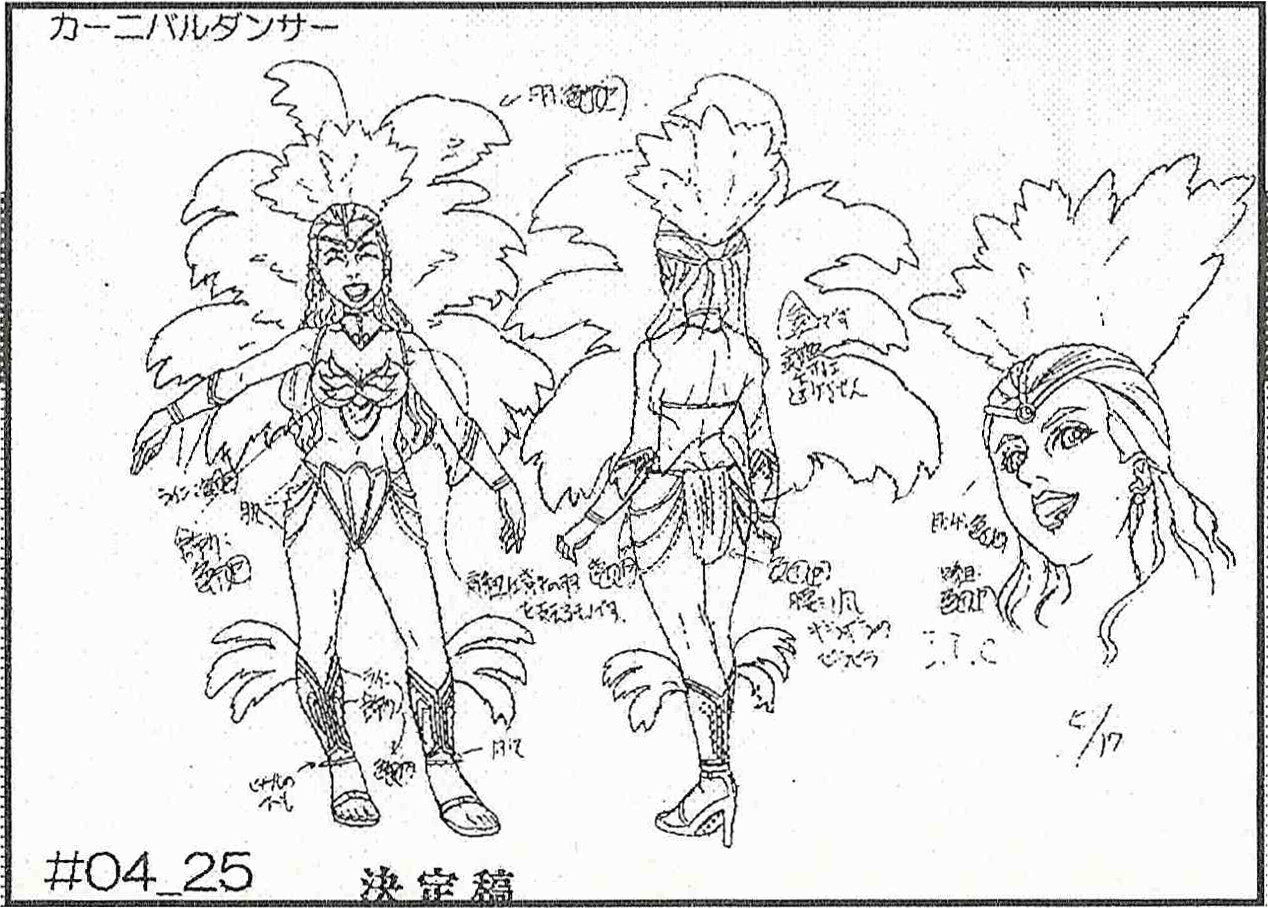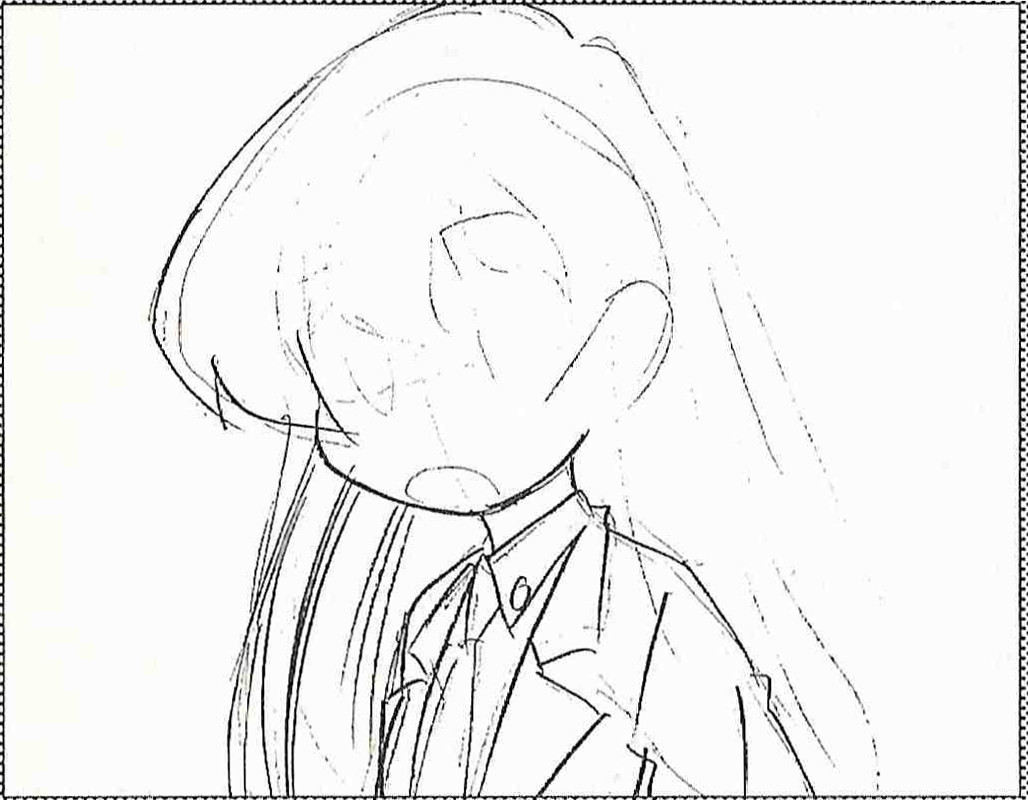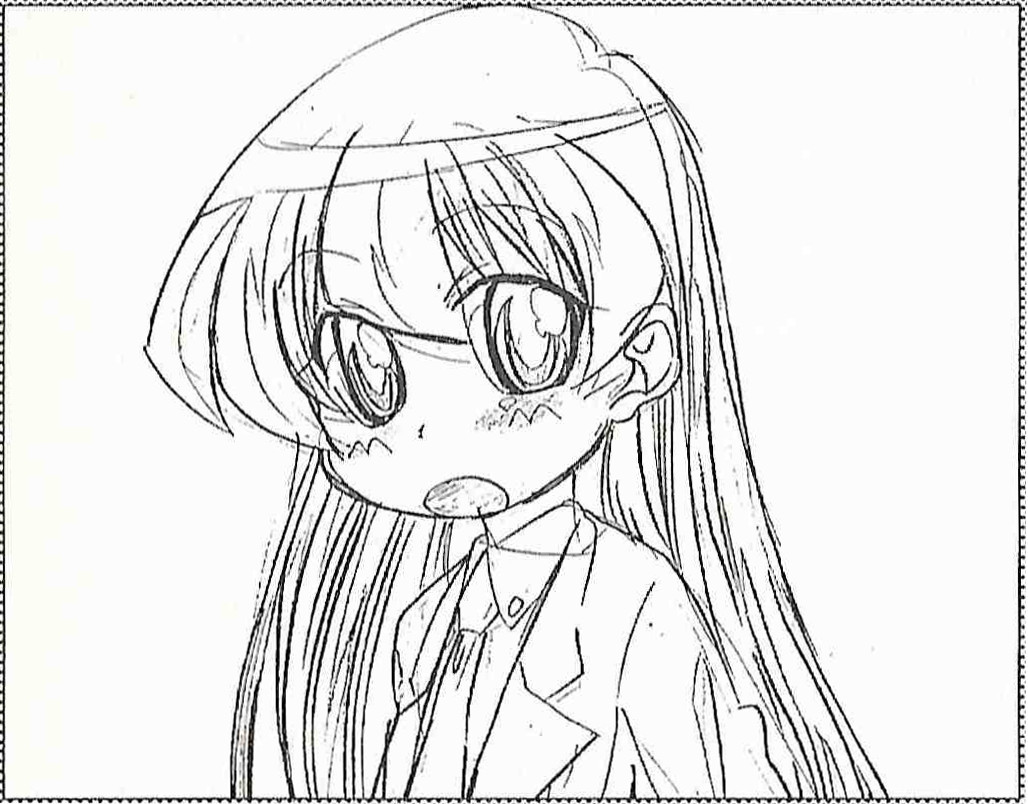The job of a character designer, commonly known as “charade”, is to carry a demanding and important responsibility when creating an anime work. Appropriate to call him an “artist”, we asked the meticulous charade Oota-san about what was on his mind. |
|---|
Is it a difficult job to design characters for an anime based on Hekiru Hikawa's illustrations? |
Oota | Generally speaking, I think it’s not, as they’re not tied on director’s demands. Working with the projects by Director Shinbo, who has a strong artistic sense, I used the art (works) from people with whom Shinbo earlier collaborated as a model, while giving my own touch. Good thing that the pictures I had drawn up until then happened to be close to the style the director preferred. After capturing this style (See Ref. 1), it got easier there on, but it took a pretty while to reach that point. Even though we had the time, there just were so many key points to keep in mind (laughs). I couldn’t take a single day-off during Golden Week (laughs). ...Even now I haven’t had a single day-off (laughs). |
Reaching the point took quite some time, right? |
Oota | Till I got an okay. It was conversely the director with whom I worked until I was able to truly grasp my style and get some self-confidence. |
What do you mean by “grasping”? |
Oota | While approaching Hikawa-sensei’s documents from various angles, this picture (See Ref. 2) led me come up with the decisive draft. It was this picture, which had me “grasp” it. Ever since I received the script to work, I was anxious and thought “What if I’m no good for a charade?”, but because the director had selected me as the designer same as “I believe in you”, which gave me self-confidence. And then he said, “Aah! I’ll start too.” At the time I got an okay from the rough draft I drew, it was something I couldn’t have even imagined 10 minutes ago. “Finally, I can go home~” was what I said then happily (laughs). |
So, there were countless rough drafts drawn before the decisive draft? |
Oota | That's right. |
What are the things you come up with when designing Becky for the anime? |
Oota | How would the lines be organised. Also, how could the hair colour be pretty. It’s part of Director Shinbo’s style, where the gestures of girls’ hair, eyes and fingertips have to absolutely be gorgeous, which I too want to display. And then I kind of had the feeling of wanting to leave my own fingerprints to the work. |
Will grasping Becky make it easier to grasp other characters? |
Oota | Of course. |
How does grasping Becky make it easier to grasp other characters? |
Oota | It takes time to memorise the art style of a manga artist to muscle memory, but after grasping it, I was able to do anything within that direction, such as giving the characters more age, taller heights, thicker bodies, symbolic hairstyles and eyeglasses. When I was able to add and subtract things like that, it became fun to do. |
What is the defining feature of Pani Poni Dash! character designs? |
Oota | I think the defining feature of Pani Poni Dash! is that the basis relies more on the direction than the individual characters. The way of direction is special and the direction is crafted fitting for the actors, which is on par with Akiyuki Shinbo’s style that I calculated throughout the creation process. When shooting close-ups, it’d be bad if they weren’t modelled like single pictures, and when shooting from a distance, the square frame should be turned into a painting. That’s the way director does it. This is something I learned when I had the opportunity to serve as the animation director for Tsukuyomi. |
Are director’s orders concrete, or abstract? |
Oota | They’re often abstract. In the beginning I was told “make a pose with legs turned inwards and make it feminine”. I went to a bookstore and looked for various references. |
Do you have any strong points, or weak points? |
Oota | I feel like my weakest point is drawing cute pictures. My strongest point is probably drawing ridiculous drawings like this. (See Ref. 3) What I like to draw are old men over the top. |
Is it fun to work as a charade? |
Oota | When I draw really ridiculous pictures like this (Ref. 3), I can get laughter going at our workplace. We're trying to do a lot of different things with Pani Poni Dash!, but we're not trying to make only a gag anime. Personally, I interpret that as a variety show that uses pictures. Creating and working aren’t tied to just one plan, so we can leave the jokes to be the ones what make us laugh just by looking at them. There are a lot of delusional situations in general. They’re just thrown in there, with no explanation. For example, my intention was to draw this Lion Mecha (See Ref. 4) from the last scene of Episode 1 close to the so-called high level of a cool robot anime. I want to pour my advanced techniques to trifling things. I aim to use skills in pointless matter. |
Who is your favourite character? |
Oota | It has to be Old Geezer. |
Old Geezer in Episode 1 really gave a strong feeling of a character. |
Oota | After watching the first episode, I think it’ll be alright if I draw him stronger. The more I’ll increase his ominousness, the more ridiculous it will get. |
Do you have any recommended points to check out? |
Oota | Behoimi’s entrance scenes, which we’ll be doing in various ways for a while now. In the Episode 2 it was T*ger Mask (laughs). As for the rest… It’s a secret. When they air, please be amazed (laughs). |
Thank you very much. |






